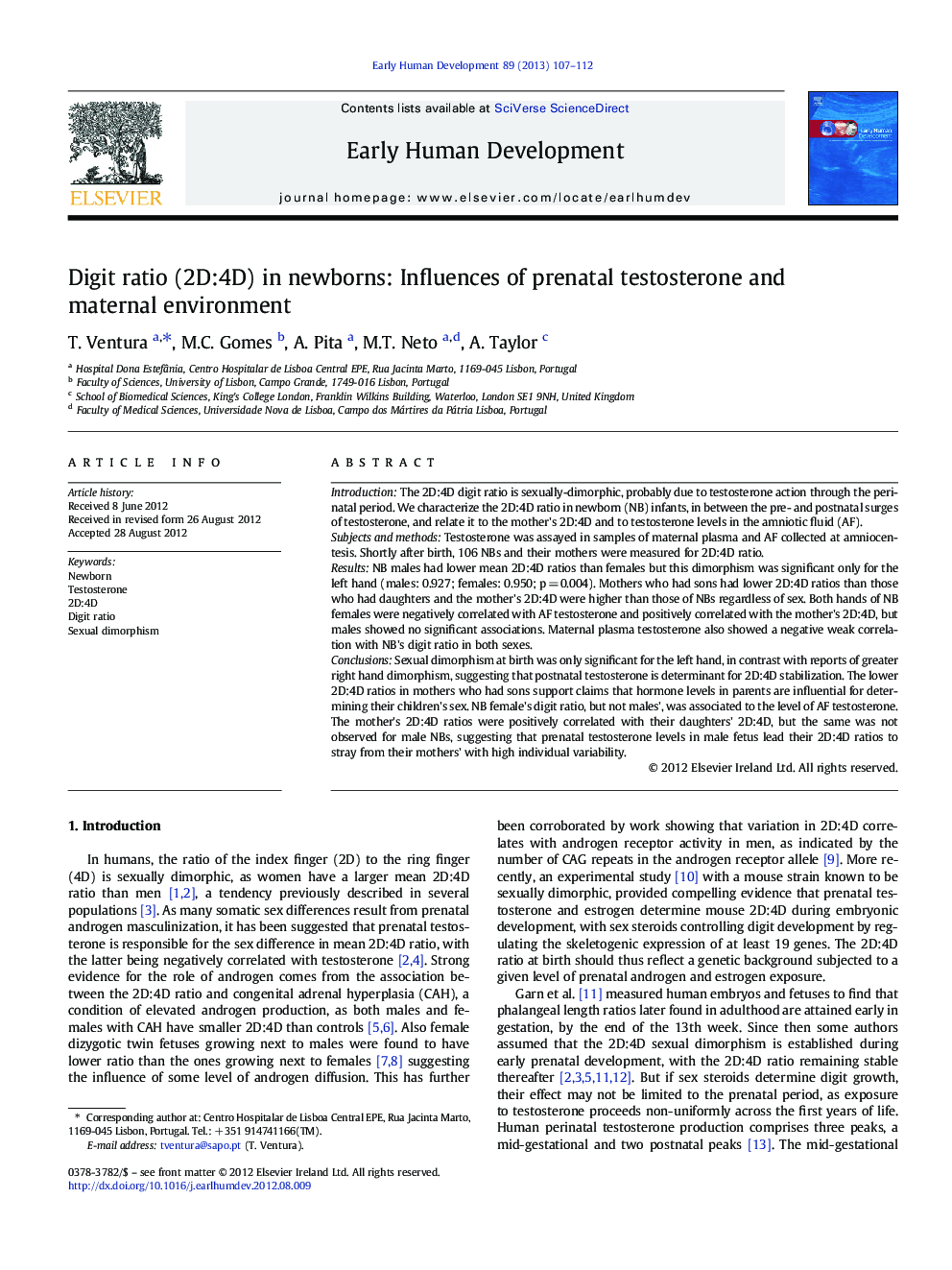| Article ID | Journal | Published Year | Pages | File Type |
|---|---|---|---|---|
| 3916739 | Early Human Development | 2013 | 6 Pages |
IntroductionThe 2D:4D digit ratio is sexually-dimorphic, probably due to testosterone action through the perinatal period. We characterize the 2D:4D ratio in newborn (NB) infants, in between the pre- and postnatal surges of testosterone, and relate it to the mother's 2D:4D and to testosterone levels in the amniotic fluid (AF).Subjects and methodsTestosterone was assayed in samples of maternal plasma and AF collected at amniocentesis. Shortly after birth, 106 NBs and their mothers were measured for 2D:4D ratio.ResultsNB males had lower mean 2D:4D ratios than females but this dimorphism was significant only for the left hand (males: 0.927; females: 0.950; p = 0.004). Mothers who had sons had lower 2D:4D ratios than those who had daughters and the mother's 2D:4D were higher than those of NBs regardless of sex. Both hands of NB females were negatively correlated with AF testosterone and positively correlated with the mother's 2D:4D, but males showed no significant associations. Maternal plasma testosterone also showed a negative weak correlation with NB's digit ratio in both sexes.ConclusionsSexual dimorphism at birth was only significant for the left hand, in contrast with reports of greater right hand dimorphism, suggesting that postnatal testosterone is determinant for 2D:4D stabilization. The lower 2D:4D ratios in mothers who had sons support claims that hormone levels in parents are influential for determining their children's sex. NB female's digit ratio, but not males', was associated to the level of AF testosterone. The mother's 2D:4D ratios were positively correlated with their daughters' 2D:4D, but the same was not observed for male NBs, suggesting that prenatal testosterone levels in male fetus lead their 2D:4D ratios to stray from their mothers' with high individual variability.
